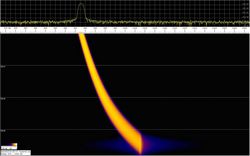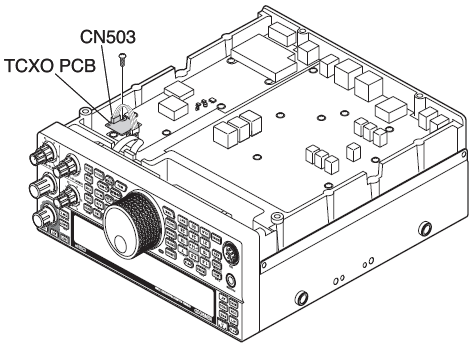 One of the first things that bothered me with my brand new TS590s was a noticeable fequency drift at startup. I was quite surprised to learn that the master clock of the TS590s uses a normal Xtal oscillator at 15.600 MHz.
One of the first things that bothered me with my brand new TS590s was a noticeable fequency drift at startup. I was quite surprised to learn that the master clock of the TS590s uses a normal Xtal oscillator at 15.600 MHz.
As a solution, Kenwood is "offering" an optional TCXO, named SO-3. It was another shock when i saw the retail price for a new SO-3. It costs a heavy 130 € in France while a new TS590s can be found around 1500-1600 €...
Nowadays, in all serious rigs a TCXO is a MUST with the growth of digital modes. In mass production, it only costs a very few €uros. I'm convinced that the price of the TS590s wouldn't be higher (or even cheaper) if Kenwood would replace the original Xtal oscillator + the TCXO addon board + 2 jumpers + the 2 connectors + screws, etc... with a TCXO !
But that's certainly a way for Kenwood to make an easy money by selling their optional SO-3 TCXO !
Moreover, the customer has to solder the TCXO on the addon board he has to remove from the transceiver. RIDICULOUS !!
SO-3 replacement
I looked for another solution and found out that the 15.6000 MHz frequency is not commonly available and standard. After a short quest, i also found on ebay a dealer in China that is offering a SO-3 compatible TCXO. Best of all, it's a small board that is a direct replacement for the Kenwood addon board. No soldering needed ! ( even if i'm not afraid by soldering some pins... )
The price is VERY fair and on a TS590s dedicaced mailing list, some where even doubting that it could work correctly. Even so, i ordered a board from this dealer and here are the results of my tests.
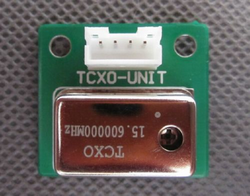 |
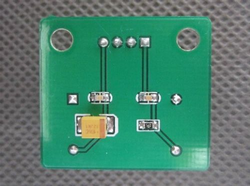 |
| TCXO board upper side | TCXO board bottom side |
Measurements setup
First of all, i wanted to be able to measure the frequency drift of the stock TS590s and later comparision with the TCXO fitted.
I have a Rubidium 10 MHz source that i could use as a reference and i thought it would be easy to fit the attenuated signal into the TS590s antenna input and measure the audio tone produced at a certain frequency.
To measure and analyze the AF frequency, i thought it would be a good idea to use a FFT software. I looked what software was available and found out that SPECTRUM LAB was a PERFECT candidate.
Spectrum Lab ( i'm discovering) can do a lot of things, and among these, it can record datas... Looking for some help, i found a paper written by VE2AZX named "Using Spectrum Laboratory (Spec Lab) for precise audio frequency measurements" . A perfect answer to my problem !
After a few tests, i adapted the settings to my needs and voilà ! All measures where made on receive at 10.001 MHz which should produce a 1000 Hz tone.
Download my Spectrum Lab configuration file used.
Download the LibreOffice Calc file containing original datas and graphs.
Original TS590s mesurements
Here the results of the stock TS590s at a constant room temperature of 22-23C on 10001.00 kHz.
There is a rapid and continuous negative drift at startup and after a few hours, a slow positive one. I didn't continue measuring after 3 -4 hours to see how the frequency evolves...
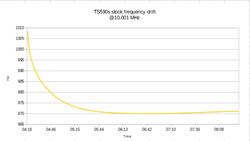 |
|
| Screen capture at startup | TS590 wo TCXO drift graph |
TCXO installation
To install the TCXO, i followed the instructions on pages 71-72 of the instruction manual, except that there is no need for soldering. The provided TCXO is on a small pcb that replaces the original addon board you can keep if you should want to return to the original configuration.The manual is a bit confusing regarding the 2 jumpers C903 and C904. You must remove them completely or attach them to only one pin, which has the same result.
On the board i got, the spacing between the 2 holes was a bit small (less than 1mm) compared to the original board, and i had to force the screw a bit. One could file the holes a bit for a perfect patch. I've send a note to the seller for future board production.
TS590s with TCXO measurements
As you can see, there is a small, very slow, drift at startup and a much better frequency precision ! A huge improvement for a small price !
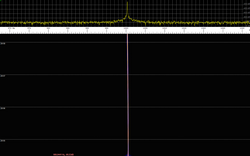 |
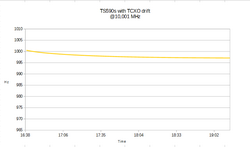 |
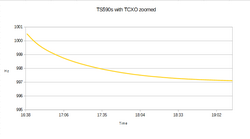 |
| Screen capture at startup | TS590 with TCXO drift graph (same scale) | Scaled drift graph (note 5 Hz scale axis !) |
I didn't make any measurements after a transmitting period where the internal temperature of the TS590s is rising quite rapidly. The difference would probably be greater as the original oscillator is drifting with the internal temperature...
Update December 2021
In one of his article, Mark W7MLG writes that after his measurements, there is a significant phase noise increase with the mentioned TCXO that is deteriorating the good performances of a stock TS590 :
https://sites.google.com/site/markstcxomeasurements/
You can probably be concerned if you run contests and live in a radio crowed area.
73, Patrick


